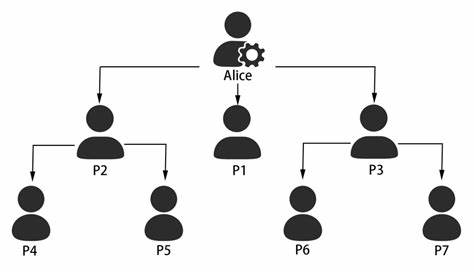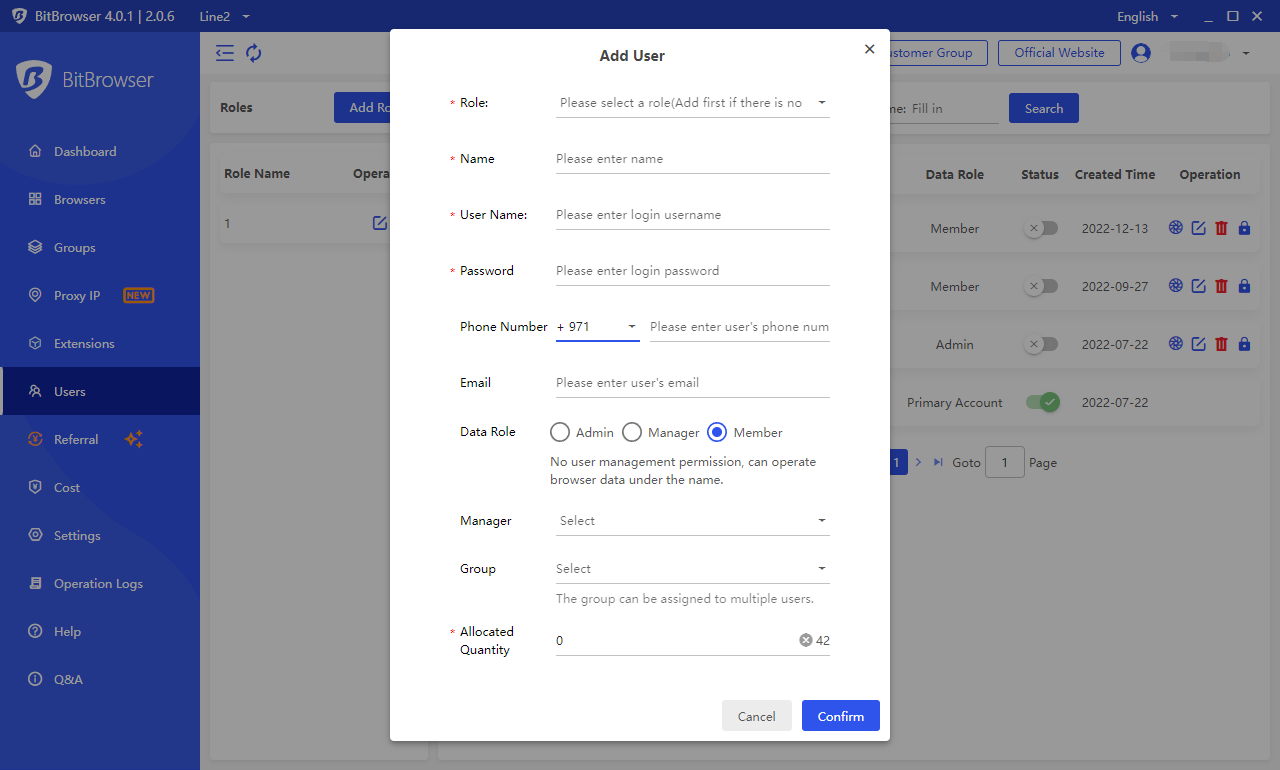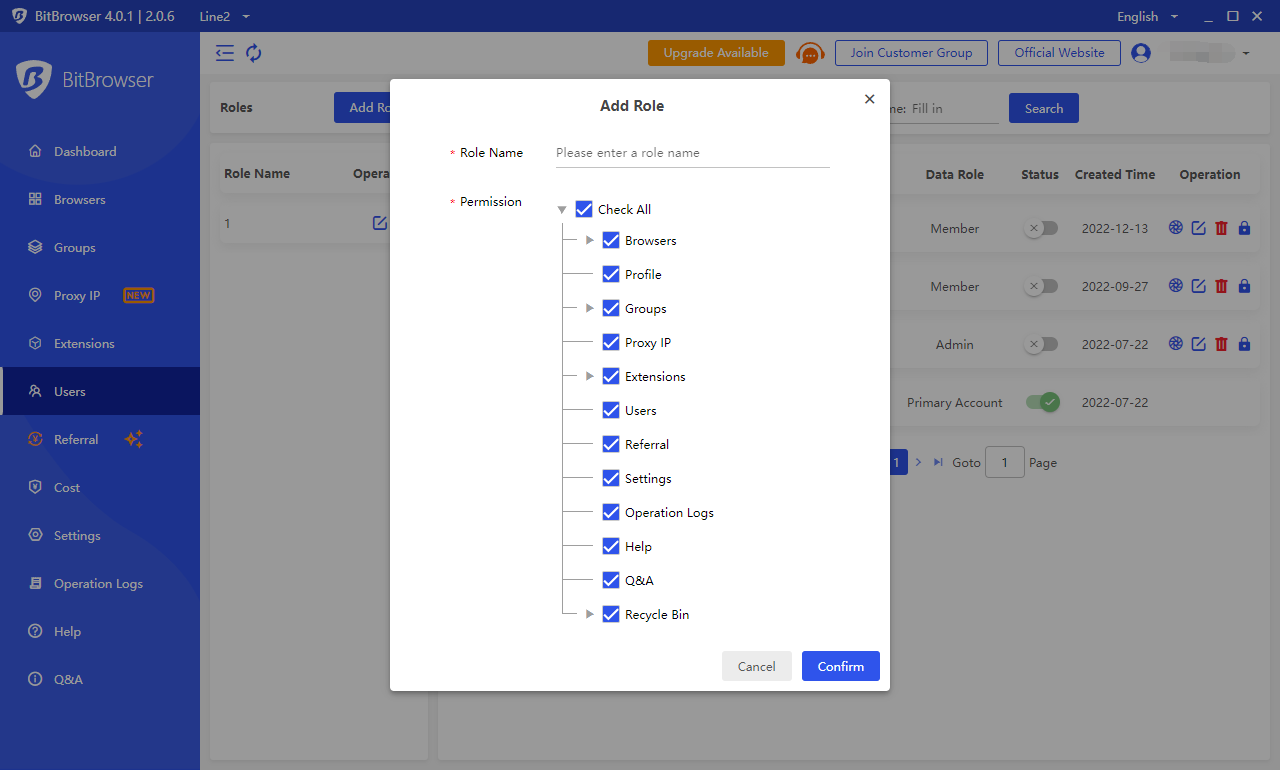
Hot Picks
How to Use BitBrowser for Multiple Bets?

Hot Picks
How to Automate Social Media Accounts

Hot Picks
How to Ensure Stable Facebook Operations When Managing Multiple Accounts
Effective Permission Allocation and Management within BitBrowser
Time: 2024-09-10 14:25 Click:

Understanding permission allocation and management
User permission allocation and management plays a vital role in controlling the actions each user can perform in the system and streamlining their workflow. Permissions are usually allocated to users according to their role, guaranteeing that each individual has the suitable access level for their job responsibilities. To understand this, let’s take a look at what user permissions are first.
Common types of user permissions:
Admin: Users in this role typically possess full access rights. This enables them to manage all aspects of the application, including adding new users, modifying settings, and viewing and editing all content within the system.
Supervisor: This role could be in charge of managing the content created by other users. However, it may not have complete administrative privileges such as creating new accounts or altering system settings.
User: Users with this role might be capable of creating content and viewing the content they created themselves, yet they cannot view or modify content created by admins, supervisors or other users.
Admin: Users in this role typically possess full access rights. This enables them to manage all aspects of the application, including adding new users, modifying settings, and viewing and editing all content within the system.
Supervisor: This role could be in charge of managing the content created by other users. However, it may not have complete administrative privileges such as creating new accounts or altering system settings.
User: Users with this role might be capable of creating content and viewing the content they created themselves, yet they cannot view or modify content created by admins, supervisors or other users.

Importance of permission allocation and management
Here are some of the reasons why permission allocation and management is crucial to companies.
Enhance Security: When specific privileges are assigned to each user based on their role or function within the company, unauthorized access to sensitive data or restricted areas can be limited. A properly designed permission model guarantees that users only have access to the resources necessary for performing their job duties, thus preventing potential security issues resulting from excessive privileges.
Efficiency: A well-functioned user permission management system simplifies administrative tasks associated with managing user access rights. Rather than manually configuring each user's permissions one by one, administrators can quickly assign predefined roles along with their associated privileges. This saves time on repetitive tasks and reduces the risk of human error during configuration changes.
Enhanced Scalability: An efficient user role permission model enables your application to scale seamlessly as your organization expands or evolves over time. When new team members join or existing ones change positions within the company structure, adjusting their respective roles becomes more straightforward. This flexibility allows businesses to adapt rapidly without compromising security standards.
Customization and Personalization: User roles and permissions allow for a more personalized experience for end-users by customizing their access according to the company’s needs. By granting specific privileges based on each role, a customized environment can be created where employees have access to the most relevant resources, enhancing their using experience.
BitBrowser makes permission allocation and management more efficient
BitBrowser is truly a revolutionary tool when it comes to roles and permissions. It enables seamless and detailed permission management through its centralized dashboard. With BitBrowser, you can add your employees as users and assign them different roles for different positions easily, here’s how you can do that.
1. Add a new user and assign a role.

2. Allocate permissions to users.

Wrapping up
By establishing roles for each user type, administrators are able to assign suitable permissions in accordance with job functions. BitBrowser simplifies permission management and guarantees that users have access to the necessary features for their particular role. Moreover, BitBrowser supports secure multi-account login in one device and social media automation. Check more.

 Multi-Account Management
Multi-Account Management Prevent Account Association
Prevent Account Association Multi-Employee Management
Multi-Employee Management



